Although I thought that I had already seen the most interesting sites in the surroundings of Podgorica and around Lake Skadar, last weekend I discovered another natural phenomenon close to the Lake: Kaluđerovo oko.
I got curious after having read an article about this beautiful spot, published two years ago by Caffe Montenegro (http://www.caffemontenegro.me/index.php/vijesti/866-a-de-ti-je-ovo ).

Finding more detailed information about this area appeared to be difficult – I just learned that the lake of Kaluđerovo oko, also called Kalubur oko, will be used as a source for the water supply system of the surrounding villages in the Lješanska nahija district.

Enjoying the sunny day in Podgorica, we took the road to Cetinje: after a ten minutes’ ride we turned left to Barutane and then again left in the direction of Goljemade.

The paved road was narrow and winding; we admired the vineyards and beautiful hills around us. After around ten kilometers only, the scenery changed and suddenly we saw a wall of stone with huge karst rocks along the road. Spring flowers were blooming among the rocks, decorating the rough landscape in front of us.
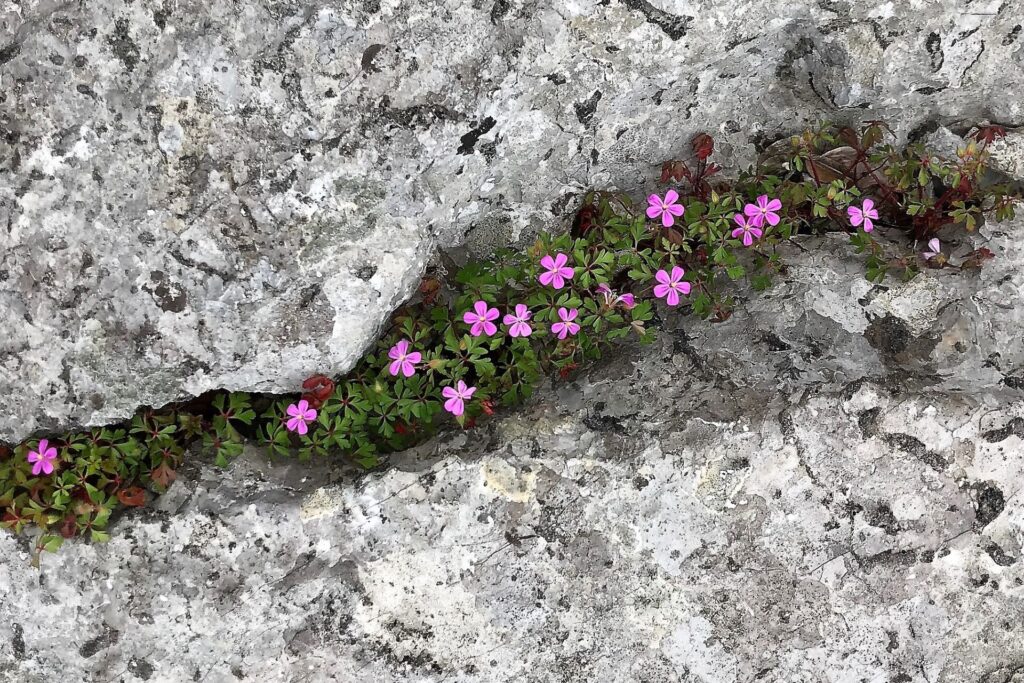
Due to the gaps and holes among the stones (be careful!), it was not easy to climb the rocks, but once we were at a higher level, we clearly saw the goal of our trip: the lake of Kaluđerovo oko. Far away was the bay of Malo Blato in Lake Skadar. What a magnificent view!

Why is this lake called Kaluđerovo oko or, in translation “Monk’s Eye”? There is a story about it: legend says that a monk from the Goljemade monastery cell fell in love with a girl from this area… Of course, such a love was not allowed and in desperation he killed himself, jumping into the deep waters.
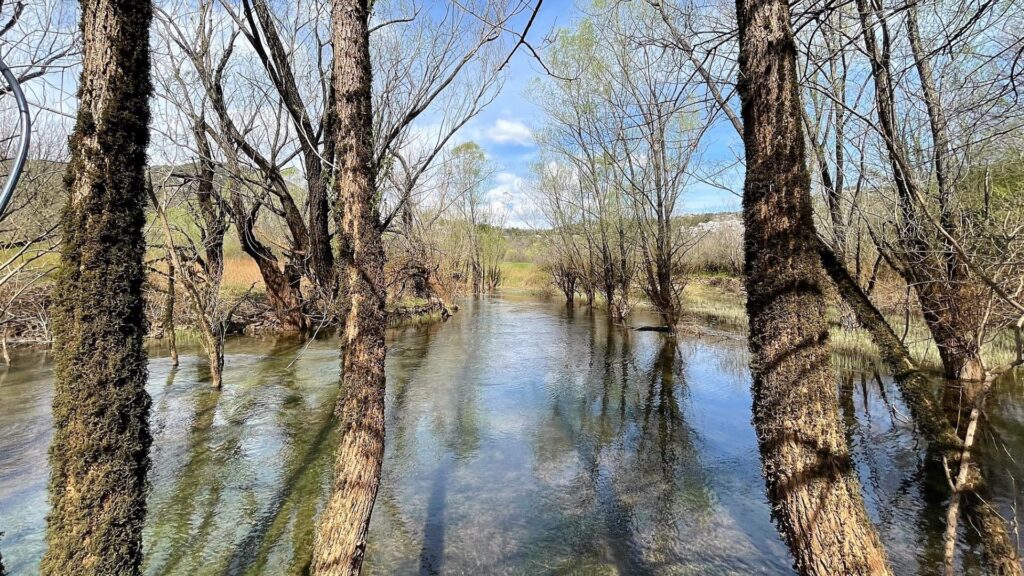
But how to get to the lake? There were no signposts at all, but I found some indications, watching a short video clip (https://www.youtube.com/watch?v=d1HC6WuTIoU&ab_channel=LokalniHoda%C4%8Di).
Further along the road was a sign “Zabranjeno parkiranje” (No parking) close to an apparently abandoned house. We parked the car and took the trail at the right side of the road. The path was rather swampy, but we continued walking and finally arrived at the bank of the lake (in spite of the sign “Private property”). Maybe there is another access trail to Kaluđerovo oko, but we could not find it. The place must be wonderful in summer with its shady trees along the bank of the lake!
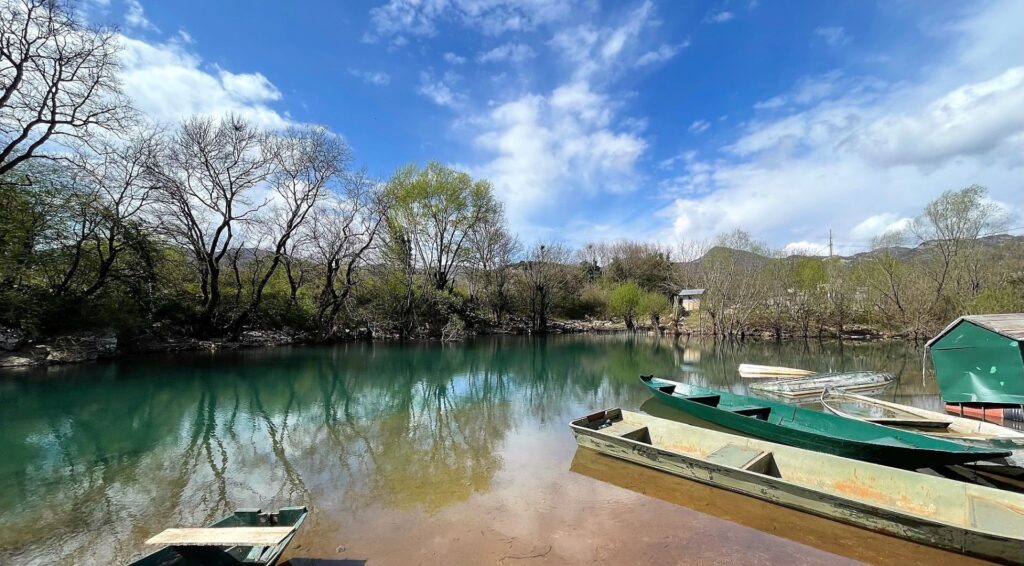
We continued our road trip to the hamlet of Sinjac (turn left at the next junction), one of the three villages at the banks of Gornje Malo Blato, in the wetlands of Lake Skadar. There are a lot of sources and water streams in this area. Moreover, there seem to be various archeological remains: monasteries, churches and fortresses – unfortunately not investigated so far.
The road stopped in Sinjac at the bank of the Lake Skadar. There are some historical data stating that this village has once been the summer residence of St. Petar Cetinjski. Nowadays, we could only admire the beautiful natural environment with hundreds of flowering asphodels, and the picturesque backwater with its traditional fishing boats called “čun”.
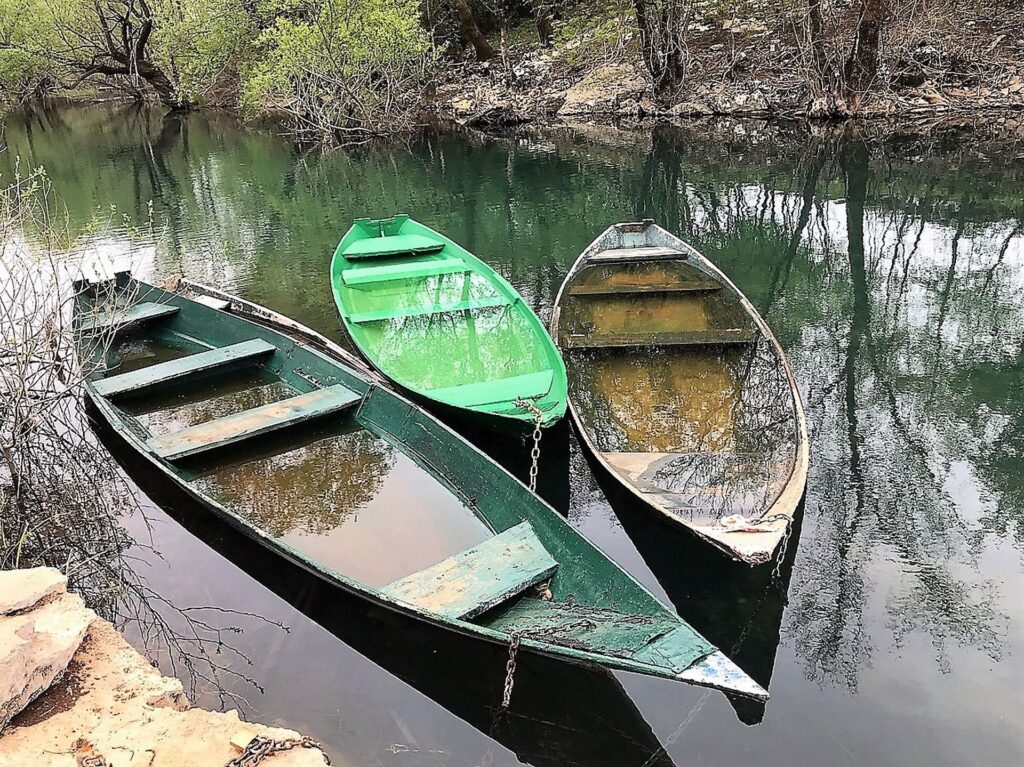
The “čun”, a slim and shallow-bottomed traditional boat, can be seen everywhere in this area. It has the advantage that it can float through shallow waters and narrow fishing trails, it can easily find its way through reeds and water lilies and it is very stable under unfavourable weather conditions (https://montenegro-for.me/2021/01/cun-the-traditional-boat-of-skadar-lake/ ).

Driving back, we turned left at the first junction and soon arrived at the village of Begova glavica. We parked the car at the beginning of the village and took the narrow swampy trail downhill at the left side of the road (opposite to the signpost in Cyrillic). That was a special experience indeed!
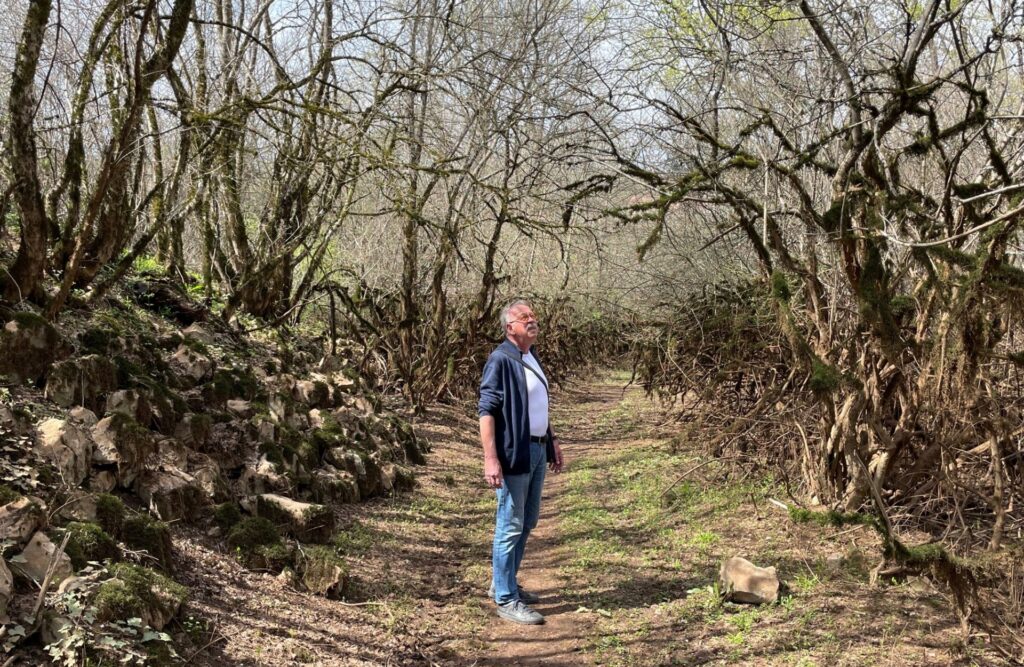
We passed through an alley of spooky, dark and mossy trees, which obviously were under the water level for a certain period of the year. Water could be seen everywhere along the trail… brooks, ponds, backwaters? … and behind the water were cultivated lands and vineyards. No people around, just a few old „čuns“ among the reed. The path turned out to be a dead-end trail and we returned to our car, really impressed by this strange and spooky area.

Today’s trip was short, and it is clear that you can also explore some other parts of Lake Skadar during your tour.

So, do you want to see more beautiful landscapes and views? In that case, you can extend the trip. What about the village of Briđe, the surprisingly big square Bobijaški trg with its breathtaking view and the picturesque villages of Karuč and Dodoši? In this region you can also find several hamlets with beautiful stone houses and the narrow roads often run in between old dry-stone walls. If you want to learn more about the wetlands of Lake Skadar, read my blog post https://montenegro-for.me/2021/04/a-road-trip-through-the-wetlands-of-skadar-lake/ .
